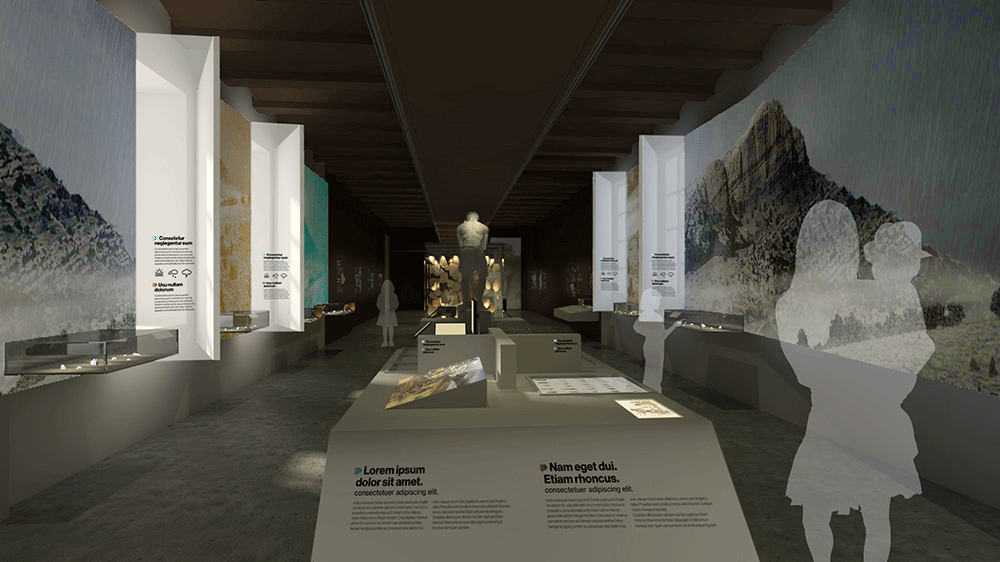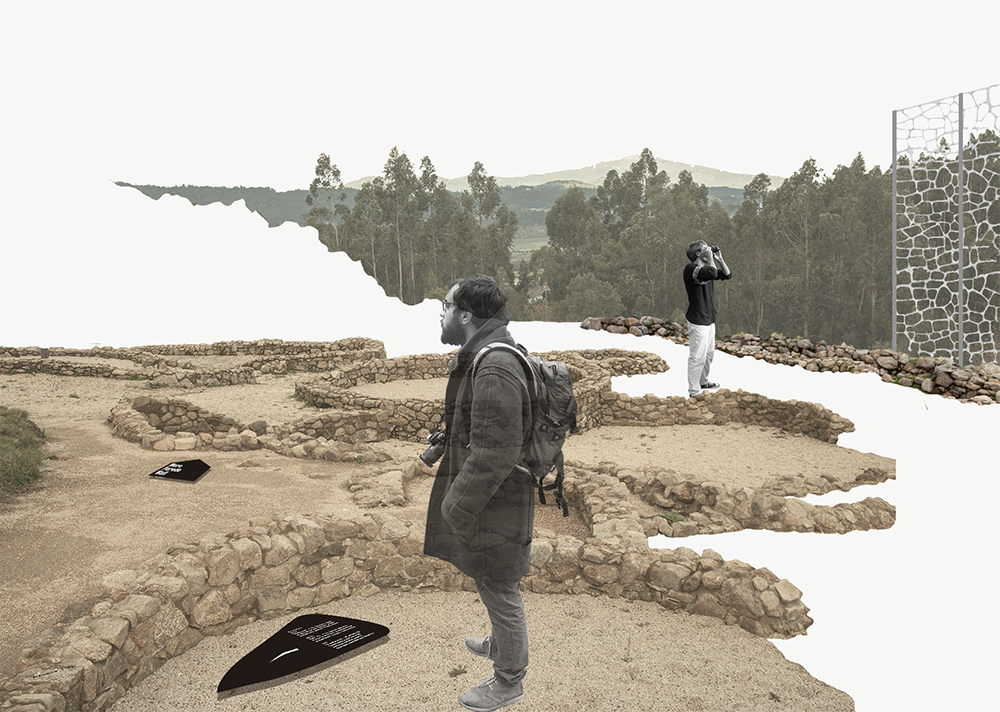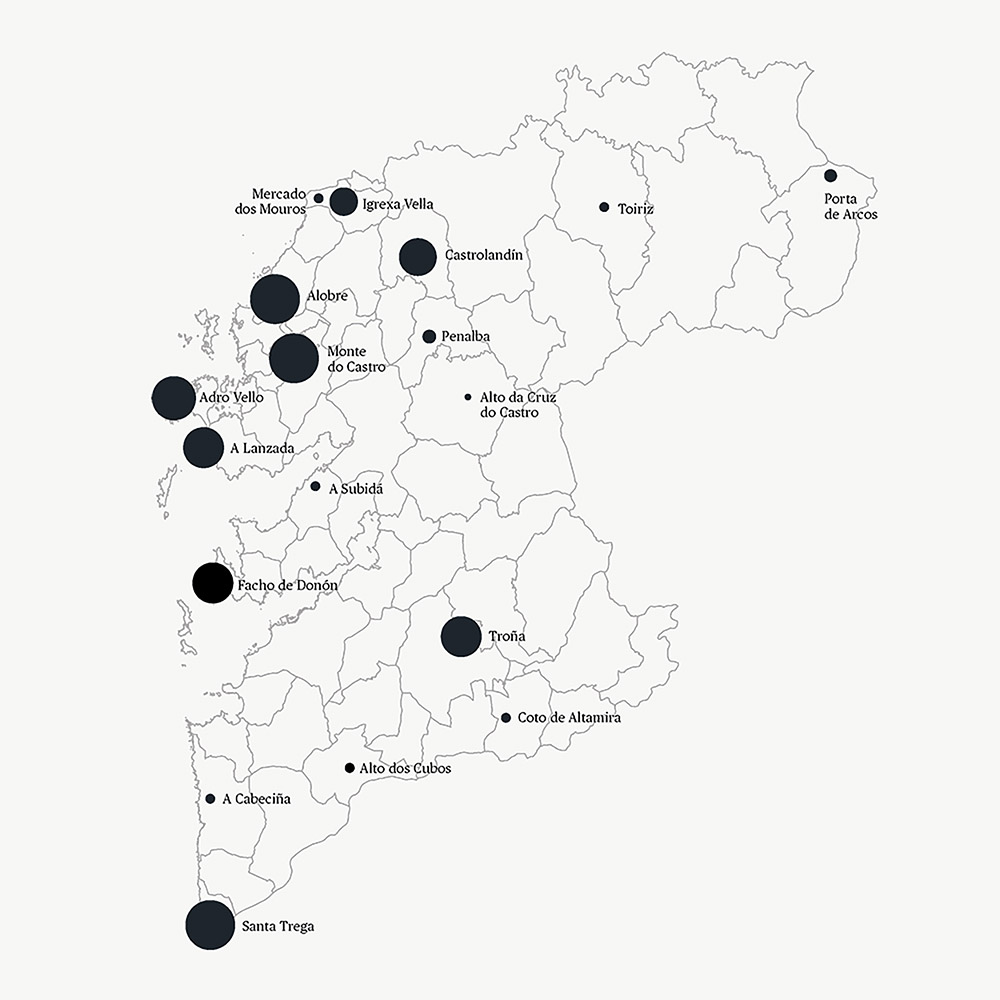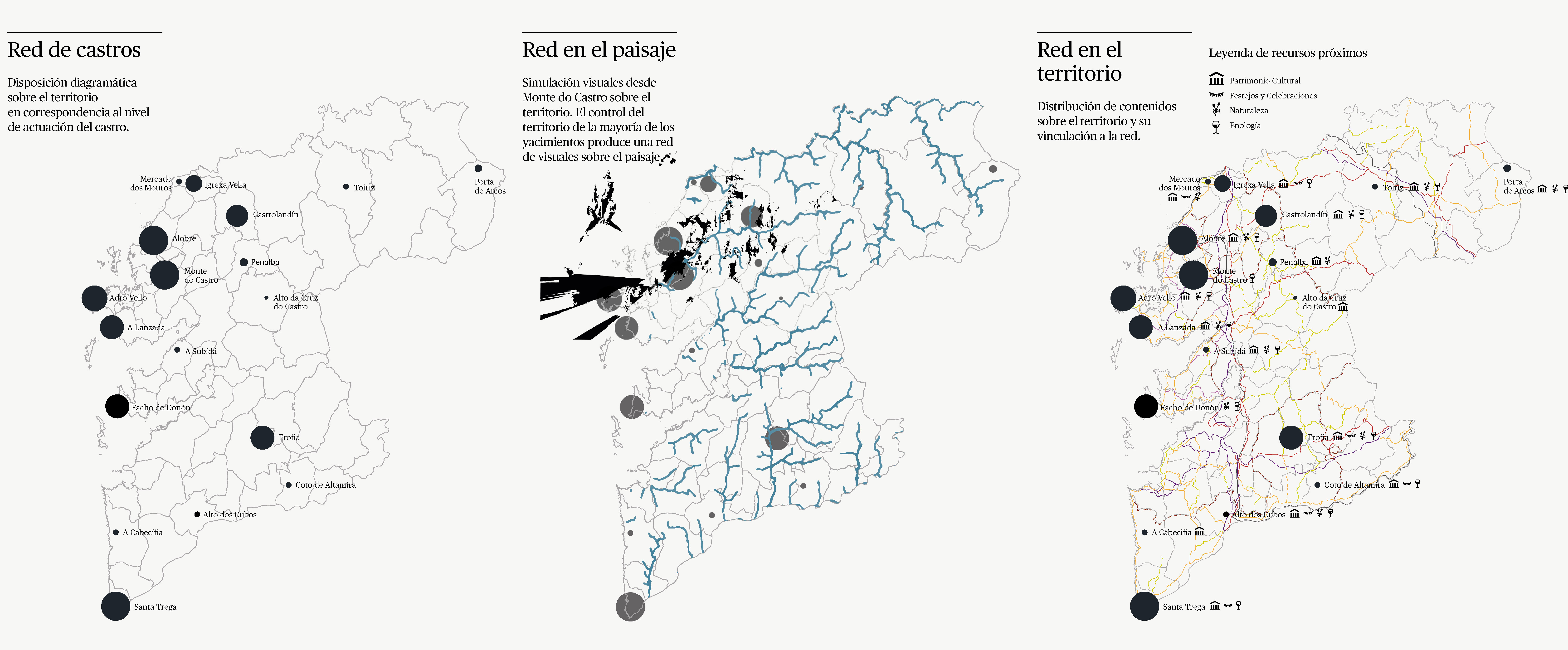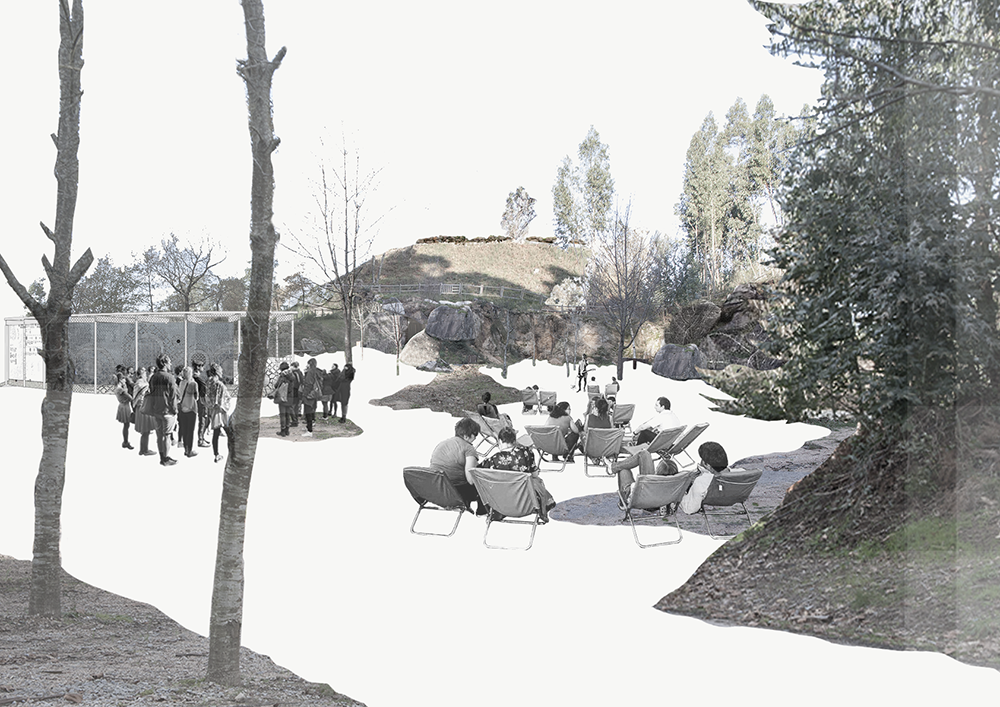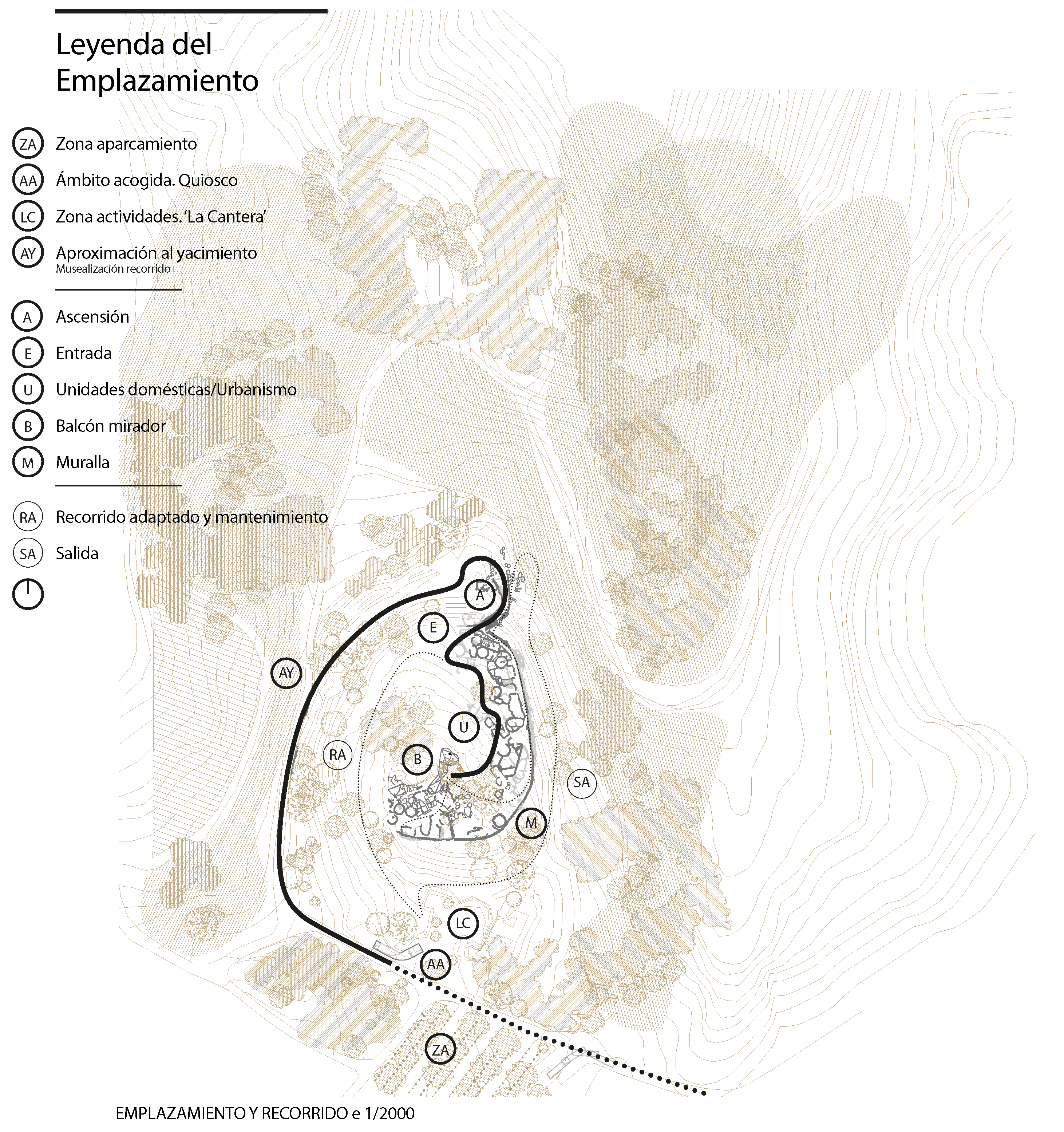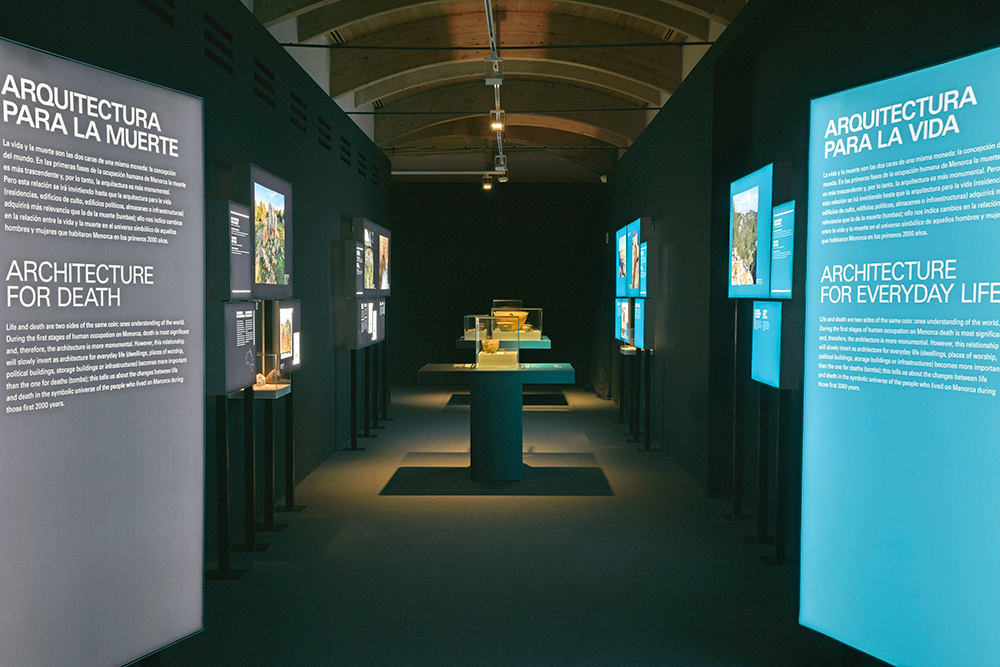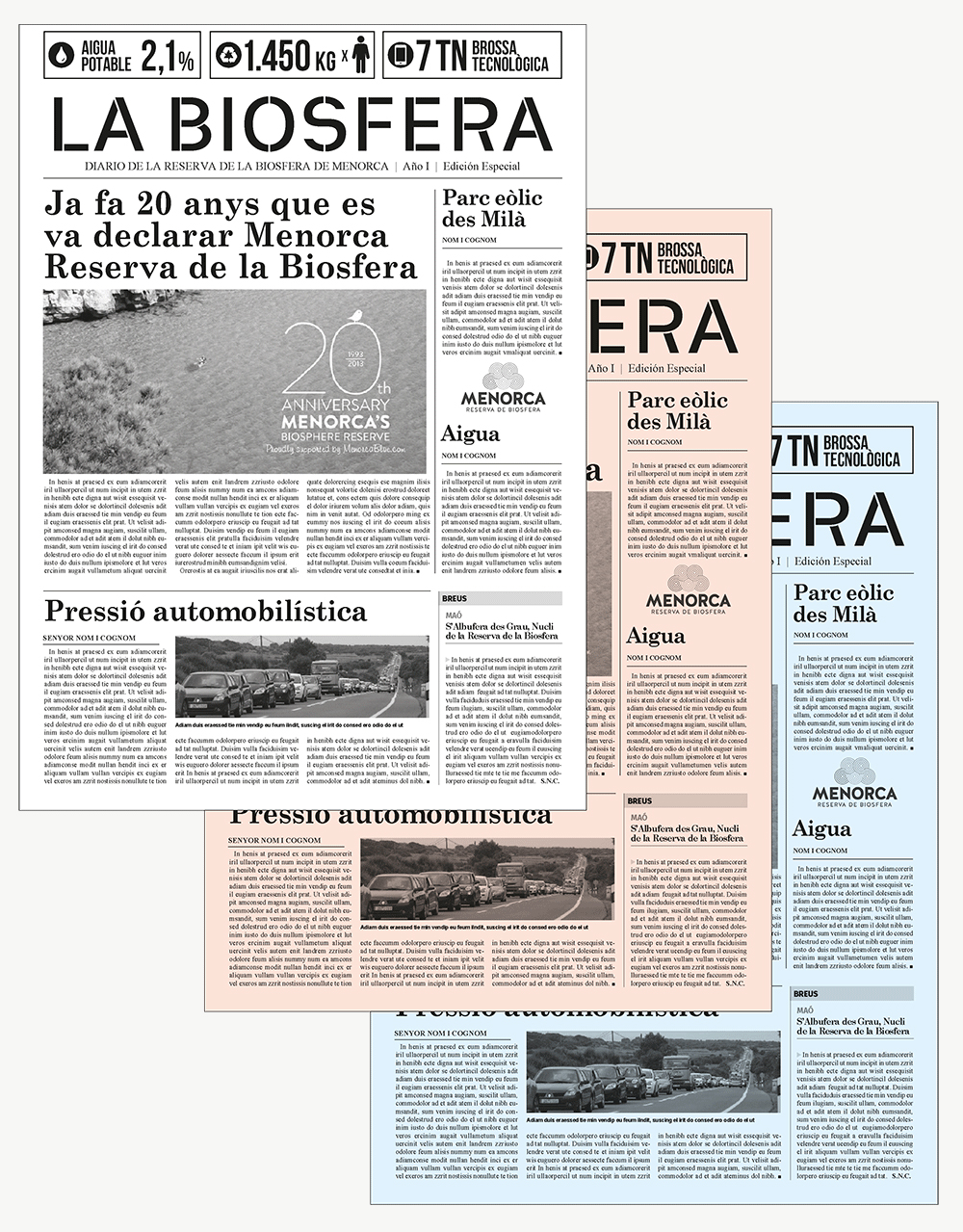The presence of castros in a landscape is evocative of a society based on the atomisation of the habitat, a world characterised by the circle as its shape, stone as its material and a world view based on controlling the landscape. Castros are part of every-day life in these towns and parishes. They have been used as a source of stones and given magical value, meaning recreated by the neighbours. Our proposal for the tender to restore and curate the Gallaeci-Roman settlements in the province of Pontevedra aimed to help valorise, preserve and raise awareness of a highly diverse group of archaeological sites, highly characteristic of the landscape in each area.
The curation challenges lie in the science, tourism and socio-economic aspects. On the one hand, the work of the scientific teams is taken as the basis for any intervention. On the other, the project seeks for the castros to be known, used and enjoyed by both local communities and tourists, promoting the presence of the castros in daily life and making the heritage sites not only a narrative but also a meeting place. We proposed a sustainable view of tourism, far from consumer-based models, with strategies to get the local population involved and have them identify with the heritage, bringing humanity, participation, emotion and meaning to the sites. Likewise, the project must have a socio-economic impact, creating new jobs, revitalising villages and parishes, making residents proud.
From route to network
We proposed a network of sites strongly rooted in the territory, far from the linear vision of a route, with a beginning and an end, of a pilgrimage from one castro to the next. The network creates a more versatile option for interacting on different levels and extending to other resources such as wineries, restaurants, natural parks, museums, archaeological sites and cultural elements, in the province, Spain and the world. This cluster structure is reflected in the name: Terra de Castros (Land of Castros).
Strategic lines
As each site has its own highlights, we proposed giving all of the sites common elements so they could be recognised as part of a network, addressing the diversity of sites with diverse actions but under a unified set of criteria, establishing a work methodology with codes differentiating between curation strategies and services, from which different levels of intervention would be drawn.
A specific proposal was drawn up for the museum curation at the Monte do Castro site, turning the route that runs from the welcome area to the site into an intense narrative space.
